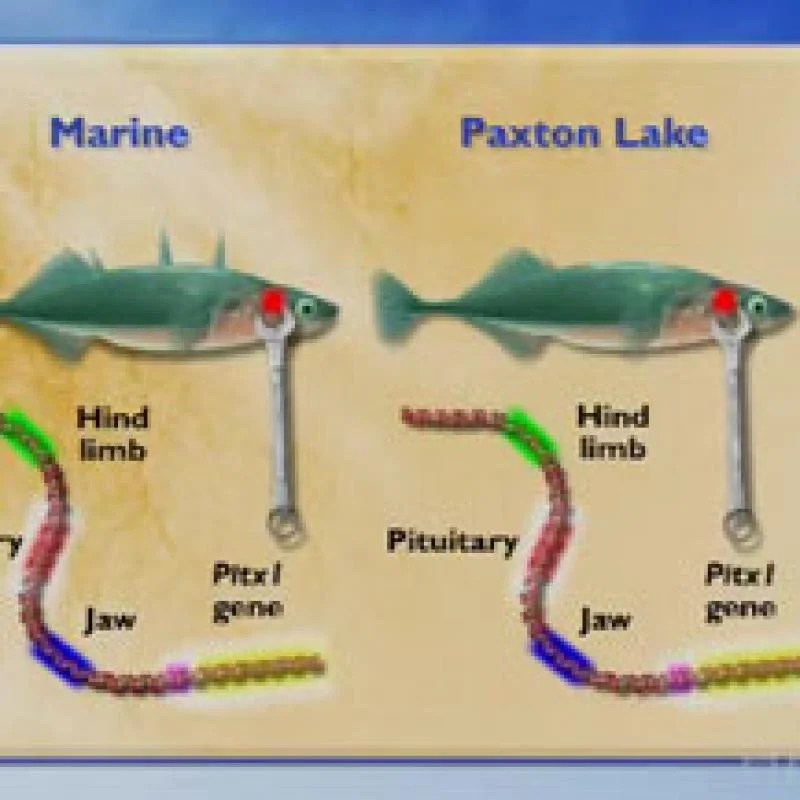Regulatory switches of the Pitx1 gene in stickleback fish captivate the scientific community, revealing a complex interplay between genetics and environmental influences that drive evolutionary adaptations. This gene plays a pivotal role in shaping the unique traits of these remarkable fish, and its regulation holds profound implications for our understanding of speciation and the genetic basis of adaptation.
Environmental factors, such as temperature and salinity, exert a profound influence on Pitx1 gene expression, modulating its activity through intricate molecular mechanisms. These regulatory switches have played a crucial role in the diversification of stickleback fish, enabling them to thrive in a wide range of habitats.
Regulatory Switches of the Pitx1 Gene in Stickleback Fish

The Pitx1 gene plays a crucial role in the development and evolution of stickleback fish. Its expression is regulated by a complex network of regulatory switches that respond to environmental cues and contribute to the adaptive diversity of this species.
Environmental Influences on Pitx1 Gene Expression
Environmental factors such as temperature and salinity significantly impact Pitx1 gene expression in stickleback fish. Temperature changes can alter the timing and level of Pitx1 expression, affecting developmental processes and adaptation to different thermal environments.
- Temperature:Low temperatures promote Pitx1 expression, favoring the development of benthic (bottom-dwelling) phenotypes.
- Salinity:High salinity conditions suppress Pitx1 expression, leading to the development of limnetic (open-water) phenotypes.
Evolutionary Implications of Pitx1 Gene Regulation
The regulatory switches controlling Pitx1 gene expression have significant evolutionary implications. They allow stickleback fish to rapidly adapt to changing environmental conditions, contributing to their diversification and speciation.
- Adaptive Evolution:Regulatory changes in Pitx1 expression have facilitated the rapid adaptation of stickleback fish to different ecological niches, such as freshwater and marine environments.
- Speciation:Divergent regulatory mechanisms have played a role in the speciation of stickleback fish populations, leading to the emergence of distinct phenotypes and reproductive isolation.
Comparative Analysis of Pitx1 Gene Regulation in Stickleback and Other Fish Species
Comparative studies have revealed similarities and differences in Pitx1 gene regulation across different stickleback species and other fish species.
| Species | Regulatory Switches | Phenotypic Effects |
|---|---|---|
| Three-spined stickleback | Temperature-dependent expression | Benthic vs. limnetic phenotypes |
| Ninespine stickleback | Salinity-dependent expression | Marine vs. freshwater phenotypes |
| Zebrafish | Conserved regulatory elements | Role in craniofacial development |
- Unique Features in Stickleback:Temperature- and salinity-dependent regulatory switches are unique to stickleback fish, enabling their remarkable adaptive diversity.
Potential Applications of Pitx1 Gene Regulation in Biotechnology, Regulatory switches of the pitx1 gene in stickleback fish
Understanding the regulatory mechanisms of the Pitx1 gene has potential applications in biotechnology.
- Aquaculture:Manipulating Pitx1 expression could enhance the production of specific stickleback phenotypes for aquaculture purposes.
- Evolutionary Biology:Studying Pitx1 regulation provides insights into the genetic basis of adaptive evolution and speciation.
Questions Often Asked
What is the significance of the Pitx1 gene in stickleback fish?
The Pitx1 gene plays a crucial role in regulating the development of key morphological traits in stickleback fish, including body shape, fin morphology, and jaw structure.
How do environmental factors influence Pitx1 gene expression?
Environmental cues, such as temperature and salinity, can alter the expression of the Pitx1 gene through epigenetic modifications and changes in transcription factor activity.
What are the potential applications of understanding Pitx1 gene regulation in biotechnology?
Manipulating Pitx1 expression could have applications in aquaculture, allowing for the selective breeding of fish with desired traits, and in evolutionary biology, providing insights into the genetic basis of adaptation.

